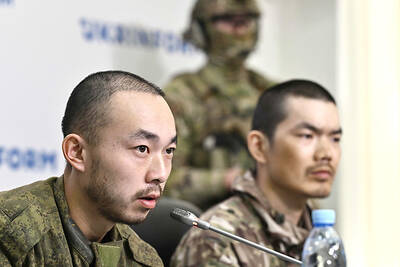The plutonium in nuclear warheads seems to be much sturdier than previously thought, with a reliable life span of as much as 100 years.
Scientists who studied all of the warheads in the government's nuclear arsenal reported that plutonium pits -- the core of the weapon -- can be counted on to work as expected for twice as long as once believed.
The classified report's conclusions were released on Wednesday by the National Nuclear Security Administration (NNSA), the semi-autonomous agency within the US Energy Department that oversees the nuclear weapons program.
"These studies show that the degradation of plutonium in our nuclear weapons will not affect warhead reliability for decades," said Linton Brooks, head of the NNSA.
But he added the plutonium -- in the form of softball-size "pits" that serve as a trigger for nuclear detonation -- is not the only thing that might go wrong as a warhead ages. Therefore, plans to design sturdier, long-lasting warheads will proceed as planned.
"Although plutonium aging contributes, other factors control the overall life expectancy of nuclear weapons systems," Brooks said.
The agency also plans to continue to seek money from Congress for construction of a new factory to manufacture plutonium pits, although opponents of such a facility argue the new study suggests it is not needed.
The new findings "show, on a practical basis, that we don't need expensive, provocative new nuclear weapons designs and industrial-scale bomb production," said Jay Coghlan of Nuclear Watch of New Mexico, a group that monitors activities at the Los Alamos National Laboratory in New Mexico.
"These proposals make the US appear hypocritical when preaching to other nations that they can't have weapons of mass destruction," Coghlan said.
Susan Gordon, director of the Alliance for Nuclear Accountability, said the study makes a new pit-making plant unnecessary.
"The US has a huge surplus of plutonium pits and now DOE's own independent expert scientists confirm that they last 100 years," she said.
The alliance represents a network of citizen groups near federal nuclear weapons facilities.
The research was conducted by nuclear engineers at the Los Alamos and Lawrence Livermore weapons laboratories and then reviewed by an outside panel of nuclear physicists and weapons experts.
The government has long assumed that plutonium would deteriorate to where it no longer could be relied upon in 45 years to 60 years. The new study put the expected minimum lifetime for plutonium pits at 85 years to 100 years, depending on the warhead.
"What this [finding] does do is it informs us that pit age isn't the primary thing that concerns us," said Tom D'Agostino, NNSA deputy administrator for defense programs.

Incumbent Ecuadoran President Daniel Noboa on Sunday claimed a runaway victory in the nation’s presidential election, after voters endorsed the young leader’s “iron fist” approach to rampant cartel violence. With more than 90 percent of the votes counted, the National Election Council said Noboa had an unassailable 12-point lead over his leftist rival Luisa Gonzalez. Official results showed Noboa with 56 percent of the vote, against Gonzalez’s 44 percent — a far bigger winning margin than expected after a virtual tie in the first round. Speaking to jubilant supporters in his hometown of Olon, the 37-year-old president claimed a “historic victory.” “A huge hug

Two Belgian teenagers on Tuesday were charged with wildlife piracy after they were found with thousands of ants packed in test tubes in what Kenyan authorities said was part of a trend in trafficking smaller and lesser-known species. Lornoy David and Seppe Lodewijckx, two 19-year-olds who were arrested on April 5 with 5,000 ants at a guest house, appeared distraught during their appearance before a magistrate in Nairobi and were comforted in the courtroom by relatives. They told the magistrate that they were collecting the ants for fun and did not know that it was illegal. In a separate criminal case, Kenyan Dennis

A judge in Bangladesh issued an arrest warrant for the British member of parliament and former British economic secretary to the treasury Tulip Siddiq, who is a niece of former Bangladeshi prime minister Sheikh Hasina, who was ousted in August last year in a mass uprising that ended her 15-year rule. The Bangladeshi Anti-Corruption Commission has been investigating allegations against Siddiq that she and her family members, including Hasina, illegally received land in a state-owned township project near Dhaka, the capital. Senior Special Judge of Dhaka Metropolitan Zakir Hossain passed the order on Sunday, after considering charges in three separate cases filed

APPORTIONING BLAME: The US president said that there were ‘millions of people dead because of three people’ — Vladimir Putin, Joe Biden and Volodymyr Zelenskiy US President Donald Trump on Monday resumed his attempts to blame Ukrainian President Volodymyr Zelenskiy for Russia’s invasion, falsely accusing him of responsibility for “millions” of deaths. Trump — who had a blazing public row in the Oval Office with Zelenskiy six weeks ago — said the Ukranian shared the blame with Russian President Vladimir Putin, who ordered the February 2022 invasion, and then-US president Joe Biden. Trump told reporters that there were “millions of people dead because of three people.” “Let’s say Putin No. 1, but let’s say Biden, who had no idea what the hell he was doing, No. 2, and